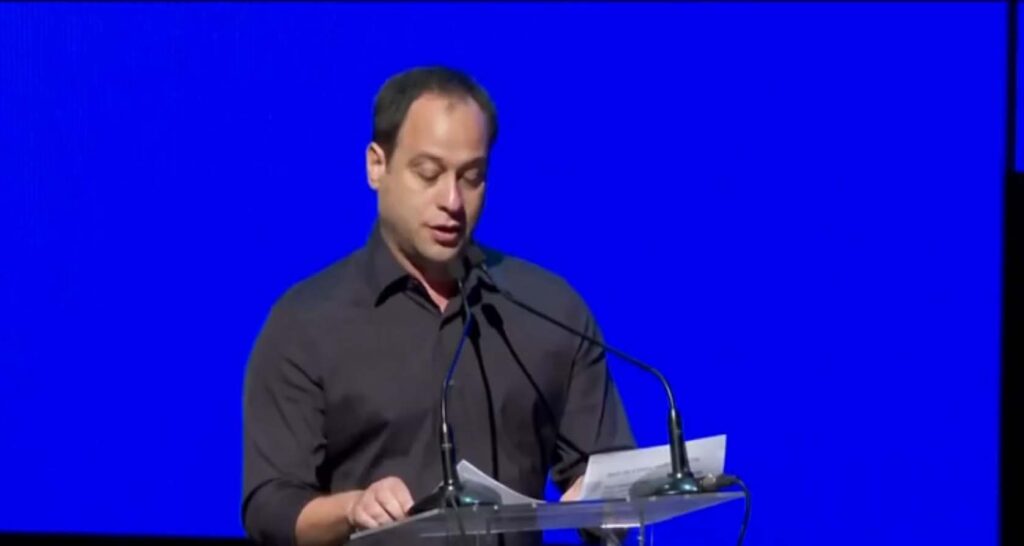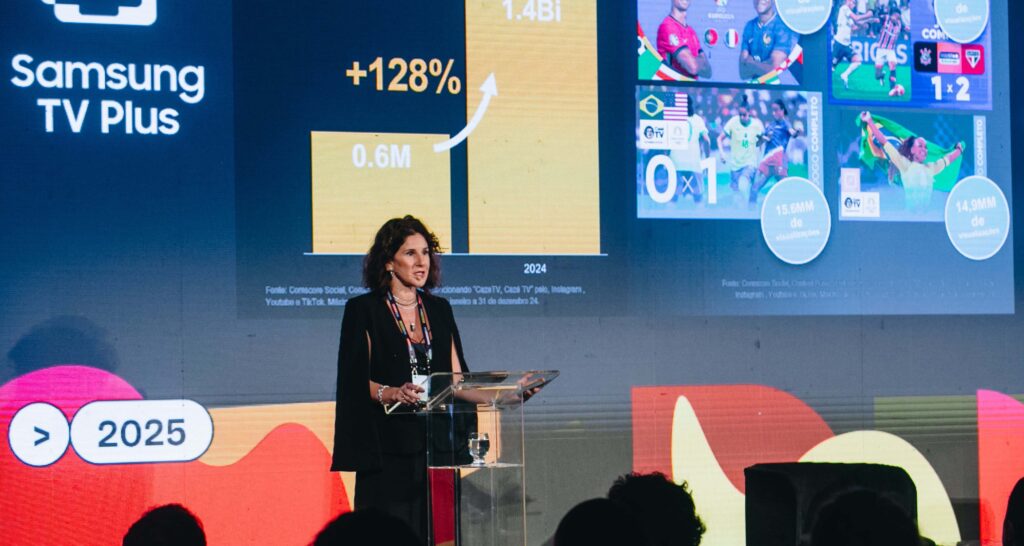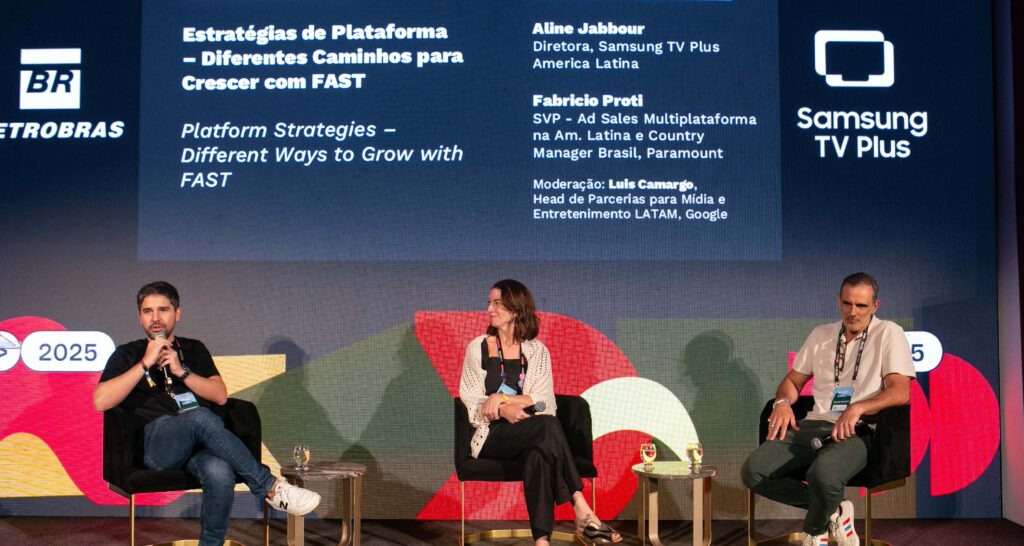By Adrián Garelik, CEO, Flixxo

There has been a lot of fuss about Web3 or Web 3.0 lately, but it is still a hard-to-explain concept — not to mention, hard to explain. The fact that new words like NFT, decentralization and metaverse are in everybody’s mouths, and that we still can’t find some context to use them properly, is confusing for the audiovisual industry which has to make its own way by making content for these hypothetical universes.
Meanwhile, a new creator emerges, one who is a pioneer, who can learn on their own and who we can take as a model to guide us to the future of content. And so, Web3 welcomes Creator 3.0.
In a great episode of Apple TV+ series Ted Lasso, the good Ted tells us a Walt Whitman phrase which goes “Be curious, not judgemental”. Everything that’s written afterwards comes from curiosity, is a point of view and is not at all a statement set in stone. I invite the reader to leave their prejudice aside and become part of the curious team. The concepts I develop from now on have only one goal: to trigger a conversation.

What’s Web3?
Before we start rambling on theories — and we are going to ramble a lot on them —, let’s make it cleaer/get it straight. Everything started in the 90s with Web 1.0, when a set of decentralized protocols arose and became accessible to all. They are still being used and allow us to send messages — e-mail — or host and visualize web pages with some kind of visual complexity — HTTP protocol. Information in Web1 is unidirectional, users enter to read the news, check on the forecast or take a look at stock-market information.
Web 2.0 was born in 2000, with the boom of social networks and big companies which centralize and monopolize access to information, holding all the profits. Information that we look for in Web2 is generated in couples: what we see is the content other users upload, their posts, pics and videos. Yet, money doesn’t reach the content creators, but Meta, Twitter, Google and other gigantic corporations.
In Web 2.0, where everyone contributes with content, creator 2.0 is born: the YouTuber, Instagrammer, Twicher. The influencer. The personal brand, the industry behind an individual creator. The streamer who, while in their room at their parents’, generates videos consumed by millions of users. There springs content that lacks production value, but that hits the new consumer generations massively. In these last few years, platforms like Netflix see the niche and take over the creator 1.0’s industry and reconfigure it. They monopolize the demand for high production value content. They keep everything.
Web 3.0 proposes a comeback to decentralized protocols, with a stronger user who is more responsible for their data and content, and a more transparent and fair distribution of monetization. This time, with technologies such as Blockchain, users can speak up and are more in charge of the creation, operation and management of structures, protocols and models. Cryptocurrency and NFTs arise as new tools to make us ‘owners’ of our digital footprint, and metaverses create universes of the mind, where rules await to be written and where content needs to explore new narratives and ways of consumption.
But this is only a chance. If we let companies like Meta define the direction of metaverses, we will be back to a centralized web, controlled by big players. Consumers 3.0 believe in decentralization values and, if we want to keep up with them, we have to follow the rules of their game.
In Web3, we log in by linking our virtual wallet, which gives us access and sovereignty over our identity, finances and ownership of our digital assets. We are responsible for our private key — great power, great responsibility — and our identity is pseudonymous. In Web3, ‘I forgot my password’ doesn’t exist.
This Web, which is more fair, more decentralized and collaborative — and more complex —, gives rise to a creator that shares those same values.
Wait a second… What is an NFT?
With cryptocurrency and Blockchain technology development, Value Internet has joined the game. Within Information Internet, if I shared a digital asset with some people — for instance, I sent them a picture of an apple — there were at least two copies of that asset, the one I had and the one other people received. And there is no security that I hadn’t sent more copies to other users or that who received this asset hadn’t shared it with more people, creating more copies.
In 2008, a game changer arrived with Satoshi Nakamoto’s invention, Bitcoin. This is the first digital asset that can be shared between peers, and there is a technology behind that makes sure it remains only one asset. If I send one Bitcoin to another user, I don’t have it anymore. And there still is only one Bitcoin. It didn’t double. It wasn’t spent twice. And the total Bitcoin emission is limited to 21 million. Everything is arranged beforehand, everything is auditable and transparent. And tremendously secure and resilient. No more ‘the system collapsed’.
Bitcoin, as other cryptocurrencies that arrived later, is a fungible asset. Meaning that my Bitcoin can be exchanged by any other Bitcoin from the net, and I will still own the same amount. The same happens with bills, with stock from a company or with the tons of soy at the stock-market. Even though they have a serial number, if I lend US$ 100, I expect them to have them back, no matter if the bill is the same. Instead, a non-fungible asset is like the ring I inherited from my granny. If I pawn it, I want to get back the same ring. Not a similar ring, or of the same value, or money for the same value. I want that ring, which has an emotional baggage — an underlying story — that makes it unique. NFTs or Non Fungible Token are non-fungible digital assets, which are unique and can’t be exchanged by any other digital asset.
NFTs have reached their popularity peak with digital art, every token representing a unique work of art. Traceble, unalterable, transferable and programmable, NFTs are sophisticated digital ownership certifications, perfect tools to own unique elements from Web3. My metaverse home, or the sneakers my avatar wears, are NFTs. My profile picture in social networks can be an NFT, and that gives me status.
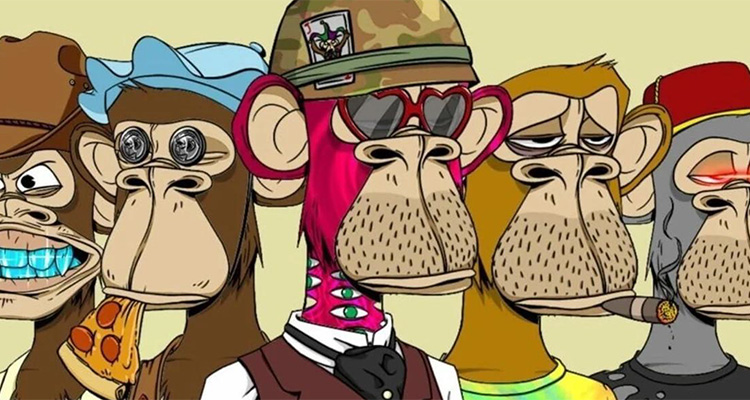
So far, according to the reader’s age and their link to new technologies, this might seem a bit abstract. But NFTs are marking our culture, leading a paradigm change, which is difficult to understand fully by those who weren’t born with a cellphone in their hand. But there is a generation that appreciates the uniqueness of their avatar’s sneakers, as well as the visionary who participated in the minting of an NFT which became a trend — and has its corresponding digital certificate to prove it. And among the members of this lively and interconnected generation, the creator appears to satisfy their content consumption needs.
Ideas constitute a network
According to American writer Steven Johnson, in a great TED talk that we present right below, an idea is not an isolated thing. An idea is a network. Inside our brains, a new idea is a new net of neurons moving in synchronicity to form a new configuration that didn’t exist before. We like to believe that great ideas are epiphanies, revelations, eureka
moments. But actually, they tend to be a set of parts which were always there. We take ideas from other people, people we have learnt from, texts we have read, casual chats we have heard; we knit them in a new way and create something new. This is where innovation really occurs.
If we apply this concept to social structures, free interaction with other people and heterogeneity of ideas lead to invention. Meeting for coffee with someone who has a different point of view, a different culture or different knowledge, opens the door to creating something similar to that neurons’ synchronized movement. In this way, we gather all our own and other’s thoughts to combine them and give birth to new ideas.
Web3’s spirit has this essence of gathering together, of creating and of collective thinking. Internet has been transformed into a kind of agora, a place where we all come together to prompt new levels of innovation never seen before. Open-Source culture — where everybody can modify some creation, enabling others to intervene even in my modification of a piece of work and allowing other creative and productive branches to appear — is the internet’s child. And it is replicable to other disciplines beyond programming. Cryptocurrency and Blockchain technology have given us the sense of digital property and have allowed the knitting of rhizomatic networks — like ginger, mint or bambu — with a myriad of horizontal roots, which spring anywhere and, though they may seem isolated plants, are interconnected below the surface. We are becoming more and more aware of the power of our own connections and of how the giants of web
2.0 have grown and gathered billions of dollars by controlling these connections.
This perfect storm is a huge fertile breeding ground not only for innovation, but for the revolution. And arranging a guerilla group, sensing the proximity of that revolution, Creator 3.0 is now giving their first steps
Creating in the Aquarius Era
Aquarius is the most Web3 zodiac sign and the creator 3.0 is born, not by any chance, in the dawn of this Aquarius Era. It might seem that stars and technology go hand in hand and are ripe for the picking, arriving to the new era that brings technological innovation and culture together. What does it mean? When we google something, it happens because technology has got into us so much that it has become part of our culture. And Web3 is not only a technological change, but it also brings a cultural paradigm change — or maybe the cultural paradigm has already changed and is now dragging technology and creative processes along.

Creator 3.0 is collaborative; they need another one to trigger creativity. They create by creating synergies; they link, integrate and connect with network awareness. They shine in constellations; they shine because the whole network shines. Their team is interdisciplinary, diverse, but it vibrates in the same frequency.
Creator 3.0 creates because they need to, because it’s their fuel. They want to tell their story their way and they want to tell it today. They don’t want to get entangled in the eternal production process that Creator 1.0 has, but they are aware of the production value and arrange teams and processes that overcome Creator 2.0. They aren’t in a rush. Though they seem anxious, it’s actually us who take it all in slowly. That’s why Creator
3.0 produces with the tools at hand.
Creator 3.0 may appear as excessively free, mad, forward-looking and unpredictable. They may be, from our point of view, too anxious and eager to want it all to happen at the snap of a finger. But, in fact, Creator 3.0 has already seen the future and knows that the future becomes present in a second.
Creator 3.0 knows technologies, they live them, take advantage of them, include them in their narrative, as well as they include and recognize technology co-creators. Creator 3.0 is naturally curious and non-judgmental. They are open to learn, to explore.
Creator 3.0 looks for new ways — and worlds — to express themself. They get that the metaverse — a universe beyond ours — is the place with the most potential for creating in an absolute freedom. This analogical world where we live, this world of the body, arrived with its social rules, physical and biological laws, all of which may be
rewritten in the metaverse, like the law of gravity. How can we tell a tale in a universe where content can be consumed while floating in space? Creator 3.0 asks that themself. Creator 3.0 questions everything, they ask themself everything. Creator 3.0 knows that the universe is being created right at this moment, it’s expanding.
For Creator 3.0, everything that is normal is considered mediocre, to go along the norm is stupid. They know that change is natural, that energy is constantly moving. Creator
3.0 can immediately perceive what’s new, what changes. Creator 3.0 is the change.
Where are Creators 3.0?
Thanks to my work, I’m in touch with creators all the time. With Flixxo and Carnaval, we have shared and worked with hundreds of creators who might be defined as 3.0.
The Microseries universe was the first place where I started perceiving the Creator 3.0 dynamic. Independent artists, small budgets. Stories told with endless freedom. The microseries creator manages to tell their story come what may. With US$100 and a liter of fake blood, within a weekend they produce a series. But they also produce with quality: around the world there are subsidies for this kind of content, and the microseries quality has been improving exponentially.
Microseries creators get together at festivals — we were lucky enough to take part in more than a dozen festivals, from Buenos Aires to Korea — and these events are usually organized collectively and collaboratively. Scarcely few times have I seen the industry taking part in these out-of-the-radar events, and even less have I seen these series join
industry events. Ventana Sur 2021 Microseries section is a good example for an awesome experience, which will happen again in 2022.
Microseries are gaining space in some platforms, but production teams are unaware or indifferent to some of them.
Another great experience and meeting point for Creators 2.0 and 3.0 was Hack Mafiz 2022, within the Málaga Film Festival. The festival organization was a pioneer at opening the game to digital creators and, through a collaborative, playful Hackaton format, more than 1500 artists from all Ibero-America had the opportunity to show their talent and insights to the industry. And the industry got the chance to learn from them.
The ‘traditional’ industry and Creator 3.0
New generations’ consumption habits are radically different from those that the industry is used to — the same way we are unaware of Creators 3.0’s creative and production processes — . Big players, with their short-term financial needs and their company 1.0 cultures, don’t know how to create channels of communication with the digital audience. Today, Netflix charges my dad some money for a plan, but in ten years’ time, they’ll have to charge my son the same amount. And my sin is not going to pay because Netflix doesn’t offer him content or models he can identify with.
With the new trend changes in the industry, which slowly follow consumption trend changes, and the growth of FAST or AVOD platforms, whose income comes from advertising, microseries represent a huge opportunity to catch people from social networks, bring 16-25-yesr-old consumers to a more ‘traditional’ ecosystem.
How do we welcome Creator 3.0? How can we help them build their poace in the industry? How do we adapt to a new generation of consumers and learn from a new
generation of creators? First, by accepting we know nothing. Nothing at all. And, despite our experience, we need to open up, learn and experiment. Creator 3.0 can teach us, is a great opportunity. Streaming platforms, distributors, TV channels, producers, we all have to be facilitators. Our mission is to get Creators 3.0 closer to technological tools, production processes and financing sources.
We must help transform their vision into a product that fits professional standards, without limiting their creative freedom. We must take a leap of faith, trust in them. Creator 3.0 knows about leaps of faith, we have to learn from them.
On the other hand, the industry must begin to experiment with technology, get educated, understand the new models. If NFT brought so many changes to the art industry that even the most traditional players like Sotheby’s are already way deep into it, wouldn’t it be logical that the next big change comes from the audiovisual or the record industry? Streaming platforms such as Flixxo — disclaimer, I’m one of the founders — have been leading the way for years, arranging a community — of Creators
3.0 — and experimenting with new models.
A very long title for a very short conclusion
Creator 3.0 creates for themself and is psrt of the new audiences to which we long to reach with oir content. By extension, let the Creator 3.0’s vision flow is an opportunity to influence, seduce and retain an Audience 3.0. The exercise of writing about oneself in the third person is interesting because it sometimes gives us a perspective of who we are and what we do. Let’s see how it goes.
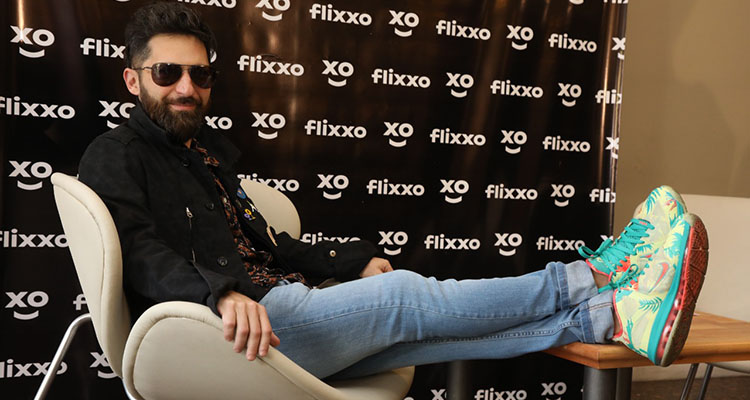
About the author of this article
Adrián Garelik (me) is, among other things, a film and TV scriptwriter, and has been behind the counter of his video store for 10 years. But he also is keen on technology and involved in the Web3 universe from before it was named that way. Founder of many companies that constitute an ecosystem of Creators 3.0, he encouraged the streaming platform Flixxo.com, the Ibero-American digital art market Carnaval.art, the crowdfunding platform Bluebits.club, and is an audiovisual Hackathon MediaHack mentor.



